ESSAY – on SPACED OUT by Valérie Félix #2
Reflection #2 on SPACED OUT / 2018 by Valérie Félix Valérie Félix is a digital art historian and curator based in Switzerland. valeriefelix.com Do we still experience the emotion of a real discovery or exploration? The frontier is an ambiguous concept. If at times it seems unchangeable, its structure is very often porous and moving. Humans have always tried to push it further and further. If the Moon was, until 1969, the ultimate frontier of our earthly civilization, its exploration seems to have been the point of no return in the mass culture, the opening-up of all kinds of possibilities, all kinds of elsewhere, allowing the human being to break all the chains from the unexplored. The Moon has always been studied, storified, fantasized and glorified. As the satellite of Earth, like an ultimate handmaid, it carries the status of a mirror, an arid and hostile Earth’s double which is mysterious and benevolent at the same time. In this manner, the Moon has awakened numerous stories and tales in our civilization, becoming an inexhaustible source of stories for writers, storytellers, shamans, scientists, etc. where the human eye continued to build an image of this rock hiding thousand secrets. Dissemination and transmission of these stories remains a rich breeding ground for popular and social culture. This is why adventure and discovery novels quickly took hold of this cultural heritage, to play with these myths and other fictional tricks. As such, Jules Vernes, one of the most popular 19th-century adventure novelist invited his readers to wonderful and unexplored worlds. He cemented even more in this myth of the frontier and the fantasy related to the Moon. The image also relates stories. It is therefore not surprising that as soon as it was possible to fix light rays on a photosensitive surface, the image questioned itself to face the frontier. Why? The image which, before the fixative chemistry, was only a fog of light rays on a plate, a latent image without possibility of survival, remained in this status of an image so desired, fantasized, taking with it this lost reality. When it was possible to fix this rendering, to finally look at it, the still image, then in motion was inevitably transformed into a medium of imagination, of speculation, disrupting the relationship between the fading reality (what has been and will never be again) and the immutable rigidity of this capture. Thus, began the game of picture takers playing with this double personality of the image: what we see is real, but is this really the truth? Particularly for the artists, this myth of the truth-image became a playground to explore, in order to treat the image as holding an unsatisfied truth, a dreamed-up phantasm which became reality through capture. At the beginning of the 20th century filmmakers also made use of these inherent questions related to this young medium. And, by the force of things, these are the same reflections that come to haunt the artists in virtual reality (VR), thus exploiting the creation media in order to interrogate the couple: image/reality-truth. If Georges Méliès’ “A Trip to the Moon” (1902) told a fictional journey to the star that we see concretely in the sky, it is the substance that is fantasized, while the form is visible and very real. Moreover, what are the questions generated when it comes to VR? Questioning the substance – As has already been brought up in Méliès’ film, the illusion linked to the Moon came from the substance, the form was known, studied. However, it is only after the first step on the Moon, that this limit was abolished, dismembered, almost cancelled, in order to allow us to fantasize about an unknown form, and that’s where VR comes in: the code helps to reflect the unexplored intangible. So, it’s not just the imagination that is hacked – it is the brain, its functioning, its neurology, its vision, its sensations and its emotions. With Sea of Tranquility, Pierre Friquet plays precisely with these layers of meaning, distributes mental traps, in order to question the overall meaning of the VR medium and its positioning in the field of artistic practices. Thus, the work that Pierre Friquet undertakes with his piece – Sea of Tranquility, plays with this delineation between the substance and the form that VR sets into place, decides to mix both of them, by continuing to work on this phantasm of the substance (specific to the science fiction and the treatment of VR), while remaining on a form that is familiar to us (a work very close to the Méliès’ film). The artist has developed this form as a theatre set, to alert us to the ambiguity linked to the myth of the truth-image. Then, with Sea of Tranquility, the hacking of the brain becomes more intense, affecting the corporal, visual and audible aspect of the body, so that the projection fantasized in the form (in this case – the Moon) is no longer just a hierarchical look at the other, but on the contrary, that the link goes both ways and, so this act of exploration became above all, an exploration of ourselves.




